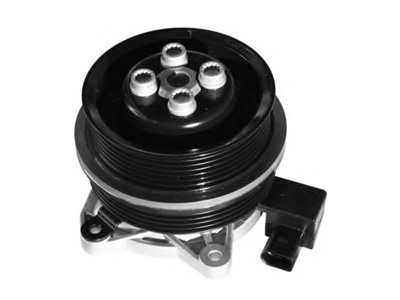

The structure for the car's cooling system.
In the whole cooling system, the cooling medium is coolant, and the main parts include thermostat, water pump, water pump belt, radiator, cooling fan, water temperature sensor, liquid storage tank and heating device (similar to radiator).2.Thermostat
When introducing the cooling cycle, it can be seen that the thermostat decides whether to go through "cold cycle" or "normal cycle". The thermostat opens after 80 ℃, and the opening is the maximum at 95 ℃. If the thermostat cannot be closed, the cycle will enter the "normal cycle" from the beginning, resulting in that the engine cannot reach or cannot reach the normal temperature as soon as possible. The thermostat cannot be opened or opened flexibly, which will make the coolant unable to circulate through the radiator, resulting in excessive temperature or normal when it is high. If the thermostat cannot be opened, resulting in overheating, the temperature and pressure of the upper and lower water pipes of the radiator will be different.4. Radiator
When the engine is working, the coolant flows in the radiator core, and the air passes outside the radiator core. The hot coolant becomes cold due to heat dissipation to the air. Another important small part on the radiator is the radiator cap, which is easy to be ignored. As the temperature changes, the coolant will "expand with heat and contract with cold", and the internal pressure of the radiator increases due to the expansion of the coolant. When the internal pressure reaches a certain value, the radiator cap will open and the coolant will flow to the accumulator; When the temperature decreases, the coolant flows back into the radiator. If the coolant in the reservoir does not decrease, but the radiator level decreases, the radiator cap will not work!The heating device is in the car. Generally, there is no problem. It can be seen from the introduction of the cycle that this cycle is not controlled by the thermostat, so turn on the heating when the car is cold. This cycle will have a slightly delayed impact on the temperature rise of the engine, but the impact is really small. There is no need to freeze people in order to raise the temperature of the engine. It is also because of the characteristics of this cycle that in the emergency of overheating of the engine, opening the window and turning the heating up to the maximum will help to cool the engine.
